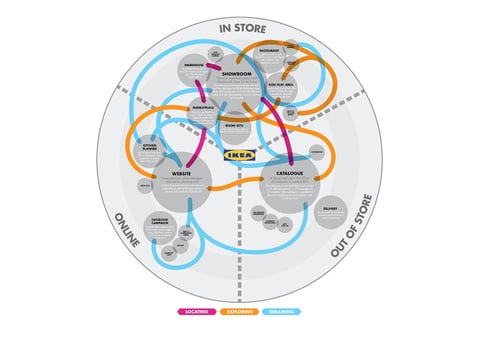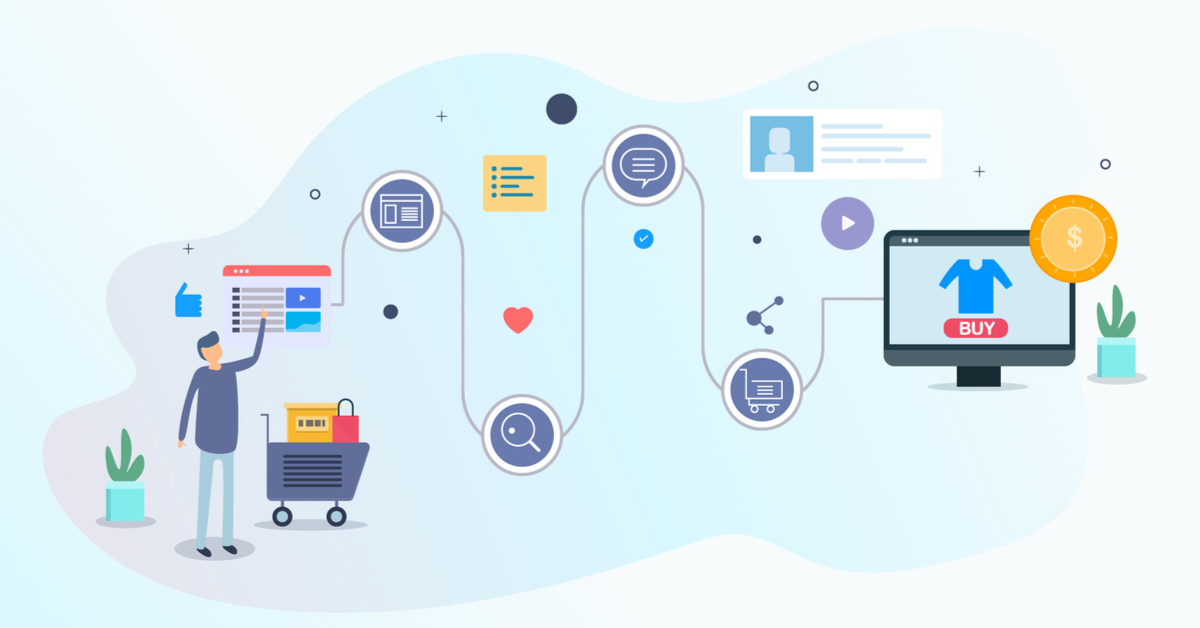If you were building a house, putting a flat-pack wardrobe together or building a Lego Millennium Falcon, you’d follow a plan … right? For the best results, plans and instructions should be followed (even if you think you’ve got an innate intuition).
It’s no different when it comes to the marketing world, especially digital. When you’re creating campaigns and strategies to target specific people or purposes, it pays to have a plan in place. That’s where customer journey mapping comes in.
Customer Journey Mapping Defined
Customer journey mapping helps a marketing team develop a visual representation of the user journey that their customers will take through the inbound funnel so that everyone in the team knows what the plan is.
The ‘flow’ part of the process outlines the ideal journey and decision-making that customers should take, while ‘mapping’ details all the key touchpoints, messaging and actions for each channel.
Combined, the two essentially detail your inbound campaign strategy. Everyone involved knows what’s going on at any part of the user journey, the purpose each asset, channel and role plays, and at what point along the journey they can expect certain things to happen.
Putting Pen to Paper
Your customer journey map will always look different to someone else’s. That’s why it’s important to document it in a way that means something to your business. But a customer journey map isn’t a contents page of every interaction your customer will have with you, and you can’t simply rely on it to tick over and make magic happen either. Instead, a marketing team should use it as a visualisation to identify key areas where they can manage how they communicate with their customers.
When it comes to designing your Customer Journey Map, there is no wrong or right way of course, as long as it conveys the critical information.
If you are looking for design inspiration I found Bree Capin's post on Toptal 'Customer Journey Maps – What They Are and How to Build One' incredibly useful. (I especially like this Ikea example which plots the customer journey across the digital and physical touch points, including the stores themselves.)
Make a Map That Works for You
If you’ve ever argued with your partner about directions, you are not alone. But it might be surprising to people who find it easy to read a map that the same skill doesn’t come easy to everyone.
That’s why your customer journey map doesn’t actually have to look like a map. Turn it into a visual abstraction that everyone can understand; they shouldn’t have to ask questions about how to read it.
So why is customer journey mapping important? Don’t we all know what’s going on anyway?
Transparency is King
The more of a plan you have, the more successful you’re likely to be with your marketing strategy. Documenting these plans and ideas is far more likely to result in them actually being actioned, than simply theorising and thinking about them.
It’s also important for your team to understand their role in your overall marketing strategy. Sales can see where Marketing is working hard, while Marketing can assign key jobs to their sales reps. Someone who specialises in social media can see exactly where their most important role will lie, while your email expert can get a head-start on their email strategy.
4 Ways to Create Your Own Customer Journey Mapping
1. Take the Customer Journey Like You’re an Actual Customer
Don’t create your customer journey map based on theories about what your customers ‘might’ do when they visit your website or engage with you online; put yourself in their shoes to find out exactly what their options will be, and what the outcomes are likely to be.
Don’t forget the little things either. Sometimes a customer’s biggest issue with dealing with a website is completely different to what you assume it is. Ask your customers what they think and what they find tough about their customer journey (it could be anything from what the home page looks like to having to go through 12 steps to create an account). What annoys them is likely to annoy other customers so take your customers’ concerns seriously.
2. Create the Opportunity for Options
No two customers are the same which is why many make different decisions along their customer journey. For you to accurately estimate what customers might do on their own journey, you need to identify all the possible options they have. From there, create appropriate messaging and touchpoints at every fork in the road so you’ll be more likely to keep your customer on their journey (because how they reach the end of the journey isn't important, it’s that they actually did).
3. Don’t Just Ask for Feedback; Use Feedback
Because you’re not an actual customer, any decision you make on behalf of them will always be an assumption. If you really want to understand how a customer makes a decision, you need to ask them.
Encourage customers to provide feedback at key points on the journey via surveys, analytics and post-sales discussions. Always pay attention to this feedback though; not only is it a waste of your time to invest in feedback then not do anything about it, it’s also frustrating for a customer to tell you about your business then not see any changes or improvements.
Don’t limit feedback just to your customers; include key departments in the business like Sales, Marketing, Product Development and Customer Service. All of these people deal with your customers on a different level so all of them have valid assumptions about what they might expect from your business.
4. Use Your Map for Good
Once you create your customer journey map, it’s time to put it all into action. A map by itself is not going to make your business better; you need to resolve to turn ideas into reality.
What does your customer journey map look like, and how have you found it useful for the direction of your business? Tell us in the comments below.
And if you want to learn more about how we design inbound marketing funnels at Hype & Dexter, you should check out our Ultimate Guide to creating your first inbound marketing campaign
Want to know my process for completing a complex Customer Journey map in just 4 hours? Book in a chat with me below:


Comments